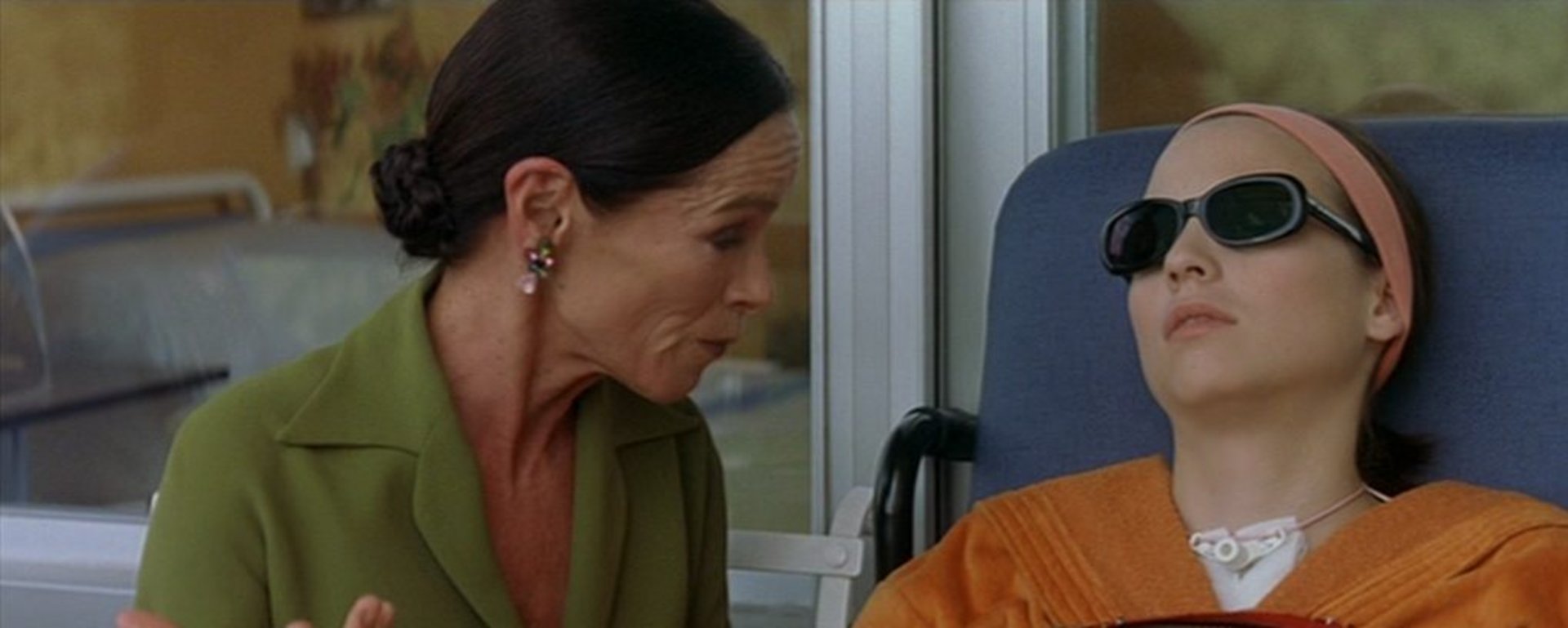
Talk To Her
Pedro Almodovar’s Oscar nominated drama is about a male nurse who is sexually obsessed with a female coma patient he cares for, and the relationship he builds up with the husband of a famous bullfighter who has also been hospitalised in a coma. It arrived at the BBFC in 2002 without a category request.
Three subtitled uses of ‘f**k’ and the gory sight of a character injured during a bullfight along with references to bestiality, rape, coprophilia, menstruation, paedophilia, homosexuality, suicide (by implied ingestion of Valium) and similar 'mature' themes, required a 15 under the BBFC Guidelines at that time. However, there were also some additional issues – sex references, sexual violence and possible animal cruelty.
Though the film does not include any strong scenes of violence during its exploration of sexual assault, it did present several issues relating to a character, Benigno, who becomes more and more absorbed in his obsession with his patient, and has sex with her whilst she is in a coma and therefore unable to give consent.
The rape is not shown, but is verbally confirmed (as the crime is discovered when the patient becomes pregnant). It is also symbolically represented by a surreal film within a film.
The short sequence is black and white and looks like a silent sci-fi film. Nurse Benigno describes the film to his patient Alicia as he tells her he loves her. The audience sees a man shrunk down to miniature size who, longs to remain with his lover and is seen crawling over her vast body. The sequence includes close up sight of a giant female breast (which the little man hugs) and later sight of the man stripping and climbing into a large model of a vagina.
The short film is clearly symbolic and is presented as comic and absurd. It does however conflate the ideas of sexual penetration and a lack of consent, not least because of the point at which it appears in the film. However the artifice of the image and lack of realism, alongside its symbolic quality was felt by examiners to reduce the potential for offence in a sequence which visually represents the film's themes of obsessive love and desire.
The sexually abusive relationship Beningno forms with his patient was also felt to be containable at 15, not least as the film clearly condemns this behaviour. More rational characters are appalled by the rape and impregnation of a coma victim, and he subsequently commits suicide. It is made clear that he will never escape the consequences of his actions and after his social dysfunction is revealed, he is subsequently depicted as a sad, marginalised, inadequate, insecure and criminal character, albeit a genuinely tragic figure.
Though this was felt to be acceptable at 15, examiners also noted that the audience’s growing awareness of Begnigno’s attraction to his patient add a degree of sexualisation to the scenes of ‘natural nudity’ throughout. (Natural nudity is nudity without a sexual context, in this case, for example, sight of patients in hospital being washed down).
The film also includes several shots of bull fighting in process including those in which real bulls are stabbed with spears, bleed and are killed.
The Cinematograph Films (Animals) Act 1937 prohibits the exhibition or distribution of a film ‘if in connection with the production of the film any scene represented in the film was organised or directed in such a way as to involve the cruel infliction of pain or terror on any animal or the cruel goading of any animal to fury’.
Though bullfighting is legal in Spain, where the film was made, within the terms of the Act the BBFC was required to cut these sequences unless the company was able to provide assurances that no such cruelty or goading took place.
On the basis of what could be seen on screen it seemed unlikely that the sequences in question had not been orchestrated or directed by the film maker (it did not appear to be documentary footage of action which would have taken place exactly as seen whether the camera was there or not). The scenes showed a female character performing in the bullring with the bull with the short lances in its neck/side, and a scene in which the bull charged the female character after being stabbed in the neck from above.
After some discussion the company was able to prove that rather than setting up a bull fight specifically for the purpose of filming their film, the company arranged to film a trainee bull fighter, fighting a bull in a training session which would have taken place anyway. The trainee matador wore the same costume as the female character and her face was superimposed onto his body so the fight appeared to involve the actress. They submitted VHS tapes, slides and photographs which proved that they had used digital effects to suggest the scene involved the actress, rather than orchestrated a bull fight or injured an animal.
Given these assurances the work was passed 15 uncut on film and video.